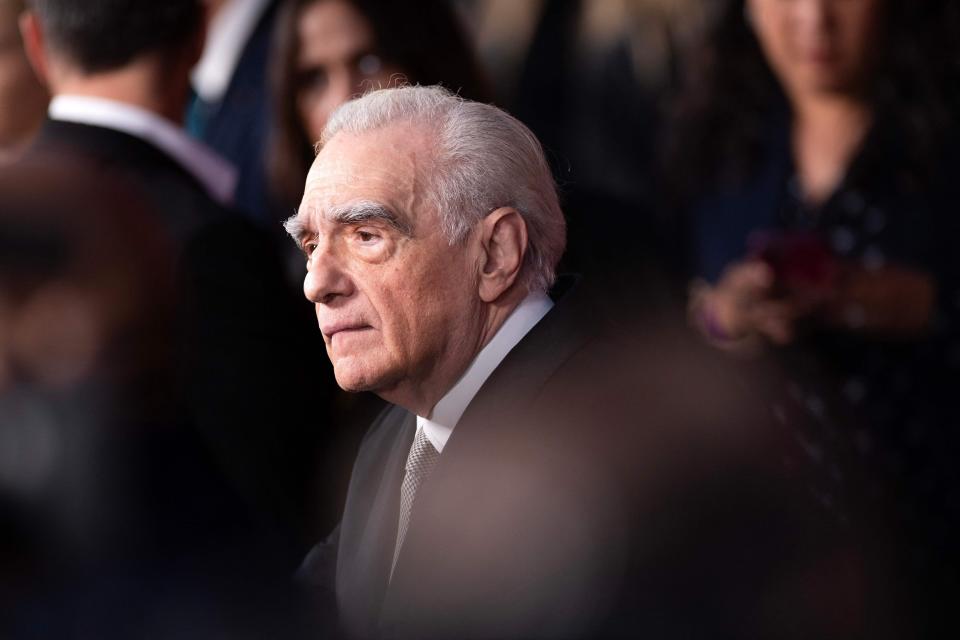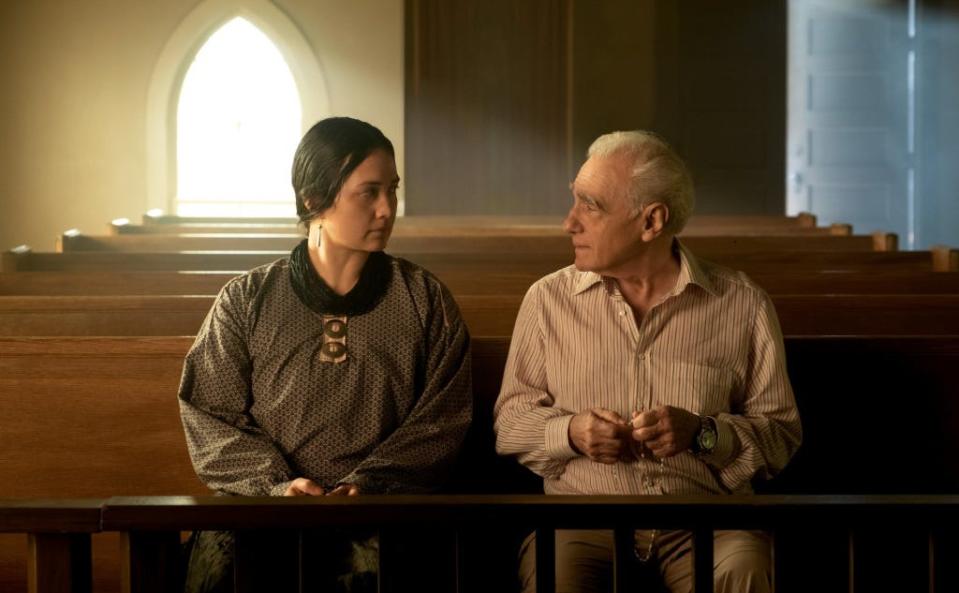'I am culpable': Martin Scorsese explains his cameo in 'Killers of the Flower Moon' ending
- Oops!Something went wrong.Please try again later.
- Oops!Something went wrong.Please try again later.
- Oops!Something went wrong.Please try again later.
- Oops!Something went wrong.Please try again later.
Editor's note: This story contains spoilers as it breaks down the ending of "Killers of the Flower Moon."
Over the course of his six-decade filmmaking career, Oscar winner Martin Scorsese has mastered the fine art of the directorial cameo.
He's made brief appearances in many of his films, from his early features like "Who's That Knocking At My Door?" to his iconic mid-career movies like "Taxi Driver" and "Raging Bull" to his more recent works like "Hugo" and "The Wolf of Wall Street."
Arguably, though, none of his previous cameos in his own films carry as much emotional weight as his appearance at the end of his latest film, "Killers of the Flower Moon."

"In a funny way, there's a culpability that I felt," Scorsese told journalists in a virtual press conference that also included "Killers of the Flower Moon" cast members Leonardo DiCaprio, Robert De Niro, Lily Gladstone and Jesse Plemons.
"As David Grann pointed out, it isn't a matter of who did it. Who didn't do it? ... I began to understand more complicity and how we all may be culpable ourselves in life to many things like this in many different ways."
How does 'Killers of the Flower Moon' end?
Since it was released in theaters Oct. 20, "Killers of Flower Moon" has put on global movie screens a dark and often-overlooked chapter of Oklahoma history: The 1920s "Reign of Terror," a series of ruthless slayings of oil-rich Osage Nation citizens.
Filmed in and around Osage County in 2021, Scorsese's $200 million cinematic is adapted from Grann's 2017 best-seller “Killers of the Flower Moon: The Osage Murders and the Birth of the FBI." The movie focuses on Mollie Kyle Burkhart (Gladstone, who is NiMíiPuu, or Nez Perce, and Siksikaitsitapi, or Blackfeet) a real-life Osage woman who, along with her family, was marked for death in a vicious scheme to swindle away her oil money.
Also an executive producer on the film, DiCaprio portrays Mollie's treacherous husband, Ernest Burkhart, who gets caught between his love for his wife and the machinations of his powerful uncle, William K. Hale (De Niro).
The almost 3 1/2-hour film chronicles in grim detail the greedy schemes and the heartless murders of many Osage people, followed the federal investigation led by Plemons' Agent Tom White.
After the convictions of Ernest, Hale and several of their co-conspirators, followed by a final face-off between Mollie and her husband, the films suddenly shifts to the set of an old-timey radio program.
A troupe of voice actors and foley artists — including one portrayed by rocker Jack White — inform the studio audience and listeners at home what happened next to those involved in the Reign of Terror.
"The radio show was an actual show. This is ('Killers' cowriter) Eric Roth's version of it. ... It was shot after the initial shooting of the film was completed. I did it in New York, where the radio shows did take place," Scorsese said in Wednesday's Zoom conference.
"I was taken by the impact of the realization that all of this generations of suffering and genocide and trauma — betrayals, love, hate, all of this — is reduced to a half-hour piece of entertainment."

What role does Scorsese play at the end of 'Killers of the Flower Moon?'
As Grann explains in his book, the FBI began working in 1932 with the radio program “The Lucky Strike Hour” to dramatize its cases. It was part of FBI Director J. Edgar Hoover's wider campaign to use the news media, radio and even film to raise the bureau's profile. One of the first radio episodes was based on the Osage Nation murders.
"Somehow, I had to find a way to make the transition of something as shocking as the radio show to bring this back to the heart of the picture," Scorsese said. "I honestly didn't know how to direct it ... being there in New York after coming back from Oklahoma."
Scorsese said he filmed the radio show scenes at his alma mater, Cardinal Hayes High School, in New York.
"(With) my wife and one of my daughters, my granddaughter, out there coming to visit ... something hit home as I was repeating the lines," he said. "This is a film, and one could say it's entertainment. So, in a way, we make the entertainment now, but it's on people's lives. It's on people's souls, basically — and we have to remember that and to keep it in balance."
In the movie, the radio show ends with Scorsese himself, playing the broadcast's producer, stepping up to the microphone to solemnly read the simple obituary for Mollie, who died at age 50 in 1937, years after the end of the Osage murders, which weren't mentioned in her obit.
"After going through the readings of it, I felt secure then that I didn't have to reshoot it with another actor. But I felt also I should just take on the role," Scorsese explained.
"If you say, 'Well, Marty, you like the old Westerns, and they were shown this way and the Native Americans are shown this badly.' Yes, I did like the old Western. Yes, I am part of the system. Yes, I am European American. And yes, I am culpable. So, I think I took that on. I couldn't verbalize that as I was doing it, but ... I guess I put it on me."
The final scene of the film cuts away from the radio show and brings the film back to the Oklahoma prairie, for the first time depicted in the present day. Framed in a striking overhead shot, contemporary Osage people dance in a circle around a large drum, showing that the tribe lives on despite the Reign of Terror.
This article originally appeared on Oklahoman: Martin Scorsese talks his cameo at end of 'Killers of the Flower Moon'

